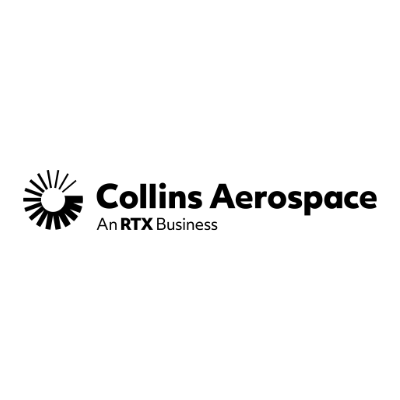Global Avionics Round-Up from Aircraft Value News (AVN)

Artificial intelligence (AI) is enhancing avionics by enabling real-time data analysis, optimizing flight paths, improving predictive maintenance through sensor data analysis, assisting pilots with decision-making, and generally increasing operational efficiency and safety by identifying potential issues before they arise, all through advanced algorithms that can learn and adapt to changing conditions.
For example: FlightAware, a Collins company, has developed neural network models for improved aviation predictions. A neural network model is a computational structure that processes data in layers to produce an output. By integrating reliable data like estimated time of arrival (ETA) and taxi-out predictions (the time it takes to go from gate to wheels-up), all stakeholders can make smarter, timelier decisions.
In addition, Collins’ ARINC Hermes messaging software is a tool that helps manage all flight deck and back-office communications in one central solution. Hermes distributes critical information to and from the aircraft flight deck to the right people and systems on the ground. Collins currently injects FlightAware Foresight data into Hermes to provide airlines with the opportunity to improve their performance.
Foresight is a machine-learning AI-based prediction tool that creates estimated time of arrivals or ETAs with technology that provides 30% to 50% less estimation error compared even to onboard flight management system (FMS) ETAs.
The Importance of Cybersecurity in Avionics
As avionics systems become increasingly digital and interconnected, they also become more vulnerable to cyber threats. Cybersecurity in avionics is no longer optional; it is a fundamental necessity to safeguard the integrity of the global aviation ecosystem.
One of the primary reasons cybersecurity in avionics is vital is the potential catastrophic consequences of a successful cyberattack. Threats such as malware infiltration, data breaches, or the manipulation of aircraft systems could compromise passenger safety, disrupt flight operations, and erode public trust in air travel. Unauthorized access to navigation systems could lead to mid-air collisions or misdirected flights.
Moreover, with the rise of connected aviation systems—such as real-time data sharing among aircraft, air traffic control, and maintenance systems—the attack surface for cybercriminals has expanded. This interconnectedness amplifies the need for robust cybersecurity measures to ensure that vulnerabilities in one system do not compromise the entire aviation network.
Regulatory bodies including the U.S. Federal Aviation Administration (FAA) and the European Union Aviation Safety Agency (EASA) have recognized these risks and are implementing stringent cybersecurity standards. Adhering to these regulations not only protects passengers and crew but also shields airlines and manufacturers from financial and reputational damage.
The integration of advanced technologies, including AI and machine learning, offers an opportunity to enhance cybersecurity defenses. Predictive algorithms can identify potential threats before they manifest, ensuring a proactive approach to risk management.
In a sector where safety is paramount, robust cybersecurity measures in avionics are not merely about compliance—they are about protecting lives, preserving trust, and enabling the continued evolution of global aviation.
Cyber Cops on the Avionics Beat
Key companies involved in avionics cybersecurity include:
BAE Systems
- Specializes in cybersecurity for military and commercial avionics, offering solutions to protect mission-critical systems.
- Known for secure data links and electronic defense systems.
Honeywell Aerospace
- Develops secure avionics hardware and software.
- Provides services to protect navigation systems, aircraft communication, and flight management.
Raytheon Technologies (including Collins Aerospace)
- Offers robust cybersecurity solutions for both military and commercial aircraft.
- Collins Aerospace focuses on secure communication systems and flight-critical avionics.
Thales Group
- Focused on cybersecurity solutions for avionics and air traffic management systems.
- Develops secure communication systems, data encryption, and intrusion detection tools.
Northrop Grumman
- Provides advanced cybersecurity solutions for military and defense aviation.
- Focuses on protecting command-and-control systems and data networks.
General Dynamics Mission Systems
- Offers cybersecurity services for avionics, focusing on military-grade secure communication systems.
- Works on advanced encryption and intrusion prevention technologies.
Airbus CyberSecurity
- A subsidiary of Airbus specializing in aviation and critical infrastructure cybersecurity.
- Protects avionics systems and develops tools to prevent and detect cyber threats.
Boeing Defense, Space & Security
- Includes cybersecurity measures within its avionics systems for defense and commercial aircraft.
- Focuses on end-to-end secure communications and system protection.
Check Point Software Technologies
- Partners with aerospace companies to provide cybersecurity solutions for embedded avionics systems.
- Specializes in endpoint security and intrusion prevention.
Palo Alto Networks
- Works with aviation firms to secure cloud-based systems and communications infrastructure.
- Focuses on threat detection and automated security protocols.
L3Harris Technologies
- Develops secure avionics and communication solutions.
- Focuses on encrypting data links and securing flight-critical systems.
Rohde & Schwarz
- Provides secure communication solutions for aviation, including radio communications and data encryption.
IBM Security
- Collaborates with aviation firms to develop integrated cybersecurity frameworks for aircraft and airport systems.
- Leverages AI and machine learning for threat detection.
Cisco Systems
- Focuses on securing avionics networks and communication infrastructure.
- Provides hardware and software solutions for network segmentation and intrusion prevention.
BlackBerry (Cylance)
- Specializes in endpoint security for connected avionics systems.
- Leverages AI-driven threat detection.
Tenable
- Offers vulnerability management solutions for avionics systems and communication protocols.
These companies work with aircraft manufacturers, airlines, and defense contractors to ensure the security of increasingly interconnected avionics systems.
This article also appears in our partner publication Aircraft Value News.
John Persinos is the editor-in-chief of Aircraft Value News. You can reach John at: [email protected]